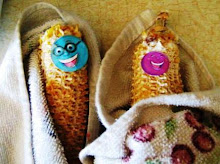HOMESTEAD ACT OF 1862:
The Homestead Act of 1862 was passed by the U.S. Congress. It provided for the transfer of 160 acres (65 hectares) of unoccupied public land to each homesteader on payment of a nominal fee after five years of residence; land could also be acquired after six months of residence at $1.25 an acre. The government had previously sold land to settlers in the West for revenue purposes. As the West became politically stronger, however, pressure was increased upon Congress to guarantee free land to settlers. Several bills providing for free distribution of land were defeated in Congress; in 1860 a bill was passed in Congress but was vetoed by President Buchanan. With the ascendancy of the Republican party (which had committed itself to homestead legislation) and with the secession of the South (which had opposed free distribution of land), the Homestead Act, sponsored by Galusha A. Grow, became law. In 1976 it expired in all the states but Alaska, where it ended in 1986. See the actual Act here.
MEDICINAL USES OF GINGER:
Ginger Water Recipe
Ingredients:
3/4 cup brown sugar
1 teaspoon powdered ginger
1/2 cup cider vinegar
1 quart cold water
ice
serving pitcher
gingeral ale, optional
Directions:
In a bowl, dissolve the sugar and powdered ginger together with the vinegar.
Pour into the cold water and stir well.
Add ice to a serving pitcher, add the ginger water mixture, and stir well.
Enjoy!
You can drink it chilled as it is, or you can mix it with ginger ale added to your preference.
EXERCISE:
Adults and children need three types of exercise to build a strong body:
1. Cardiovascular: Exercise experts call this aerobic exercise. Aerobic is just a fancy word for "with oxygen", and simply means that you are getting your heart rate up. Exercising in this way makes your body's heart and large muscles stronger.
How Much? The very latest evidence suggests that kids need about 30 to 60 minutes most days of the week. For adults, at least 4 days a week, if not daily.
What Types? Soccer, basketball, football, tennis, hockey, and other sports you play and practice; cycling, walking, running, swimming, canoeing, skating, roller blading, skipping, playing hopscotch, skiing, snowboarding, dancing, jumping rope, to name a few...
2. Stretching: Staying flexible is one way to avoid getting strains and sprains when active. It's easy, you can even stretch while watching television. Always stretch before and after any activity, so that muscles stay relaxed. That means fewer injuries and a better workout. Some activities can actually make you more flexible, including yoga, ballet, gymnastics, tumbling and martial arts, such as tai chi and karate.
Everyone should participate in flexibility building activities 4 to 7 times a week.
3. Strengthening: You are absolutely right if you think that stronger muscles are good for your health. Muscle building activities should be included in your workouts at least 2 to 4 days a week. While most people associate weight lifting with strength training, beware - for children, weight lifting is not recommended! Instead, try: push-ups, sit-ups, dips, knee bends, throwing, pulling and pushing (like vacuuming). Building strong muscles makes it easier to do just about anything. Plus, an added bonus, muscle mass is more metabolically active, so the more you have, the more efficiently the body uses calories for fuel.
NOCTURNAL - belonging to or active during the night
SAMUEL MORSE:
EARTH ROTATION:
Lesson Plans from NASA
Common Misconceptions about Day and Night, Seasons
Lesson Plans from EnchantedLearning.com
BLUE BONNETS OVER THE BORDER:
Precipitation - Rain, snow, hail, or sleet.
Precipitation Coloring Sheet
On-line Meteorology Guide
Definitions of Precipitation
Water Cycle Lapbook
EARTH ROTATION:
Lesson Plans from NASA
Common Misconceptions about Day and Night, Seasons
Lesson Plans from EnchantedLearning.com
BLUE BONNETS OVER THE BORDER:
Precipitation - Rain, snow, hail, or sleet.
Precipitation Coloring Sheet
On-line Meteorology Guide
Definitions of Precipitation
Water Cycle Lapbook
INDIAN SUMMER - an informal expression given to a period of sunny, warm weather in autumn in the Northern Hemisphere, typically in late October or early November, after the leaves have turned following an onset of frost but before the first snowfall.
BATTLE OF WOUNDED KNEE CREEK:












No comments:
Post a Comment